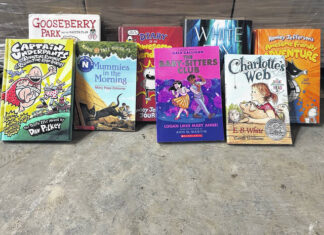
Despite the cool and wet spring, honeysuckle has finally arrived. Look all around and you will see the hills, riverside, building walls and country fences adorned in some Mother Nature’s favorite decor.
Honeysuckle is the first edible flower I ever came into contact with. I can recall as early as the age of four, making honeysuckle jewelry, crowns and bouquets. My friends and I would dance and sing, joyously celebrating the beautiful flowers. We were told how sweet the honeysuckle was and instructed how to taste the flower, but I was never completely satisfied. It seemed like there had to be a different way to taste the sweetness or more of it.
Despite the cool and wet spring, this fragrant flower has finally arrived. Look all around and you will see the hills, riverside, building walls and countryside fences adorned in some Mother Nature’s favorite decor.
Ask any floral expert and they will tell you the honeysuckle is a symbol of pure happiness. In addition, it conveys messages of sweetness and affection, thanks to the sweet-smelling aroma it gives off.
Common honeysuckle, usually found in Europe and throughout North America, is known to climb up to 32 feet high, has white and yellowish colored flowers and sprouts red berries.
Japanese Honeysuckle produces a vanilla scent and can potentially grow to more than 80 feet. Invasive exotic honeysuckles are native to Asia and southern Russia. They were introduced into North America as ornamentals in the mid-18th and 19th centuries, due to their showy flowers and fruit. They were also used for wildlife food and cover, and soil erosion control. Some parts of the United States are so intensively covered with these species that they have to scale it back.
The flowers, seeds, berries, and leaves are used for medicine. Honeysuckle might decrease swelling and also have antiviral effects. It contains essential oils as well as antioxidants such as quercetin.
You can eat the nectar from its flowers and use the flowers to make syrups or jelly. However, do not eat the berries from this vine. While Honeysuckle blooms are safe for humans, the berries are not safe to consume. No part of the plant is safe for pets, including cats and dogs.
Many people reach for Honeysuckle tea to help fight the common cold. Traditional Eastern Herbalism recommends using the herb for upper respiratory tract infections because of its lung-supporting benefits. Those with asthma often use Honeysuckle to soothe and clear the airways.
This beautiful species was once believed to grow around a home’s entrance, to bring good luck and stop any evil spirits from entering.
Fresh honeysuckle flowers can be used as an attractive garnish, or they can be dried for later use.
As with many other edible flowers, the petals can be infused in spirits as a flavoring. I infuse a small handful in a small bottle of vodka for up to 24 hours. Then fine strain and decant into a clean bottle. It’s delicious.
Today I have included one of my favorite simple and delicious recipes for honeysuckle. Need it a little sweeter? Add more honey. Not sure what exactly honeysuckle tastes like? Well, this is a perfect place to start.
Good luck and enjoy!
Honeysuckle Iced Tea
2-3 cups of honeysuckle flowers (Use fresh not wilted flowers.)
3 cups of water
Honey or sugar (Preferred sweetener. Use as little or as much as you prefer.)
Begin by rinsing honeysuckle flowers with cold water. This is not the three cups you will later be using. After cleaning, remove the green bulb part of the flower if it still remains. Be careful not to remove the yellow-orange colored stamen coming out of the flower.
Using a large pot, boil the three cups of water. As soon as a rolling boil has been archived, dump the flowers into the water and turn off the heat. Allow the pot to remain on the stove.
Gently stir the flowers and place a lid on the pot. Let flowers steep in hot water for at least one hour or longer. The longer you allow them to steep, the stronger the flavor.
After finishing the steep, strain all flowers and debris out of the water. Allow the water to cool.
It’s even better, and easier if you have time to place it into the refrigerator after it has cooled off enough. Just be sure it is in an airtight container. It is also delicious when served immediately.
When serving, fill a large glass with ice and pour the honey suckle water over the ice. Add any or as much sweetener as you desire. If the tea is too strong, add water or ice.
Garnish with a honeysuckle flower and enjoy! It is also delicious with a sprig of mint as a garnish.
–
The photo used in today’s article is provided by Lauran Hardin of Little Cabin Creek Farm in Lewis County, Kentucky. The recipes used in today’s article are from the kitchen of Chef Babz (babzbites@gmail.com





